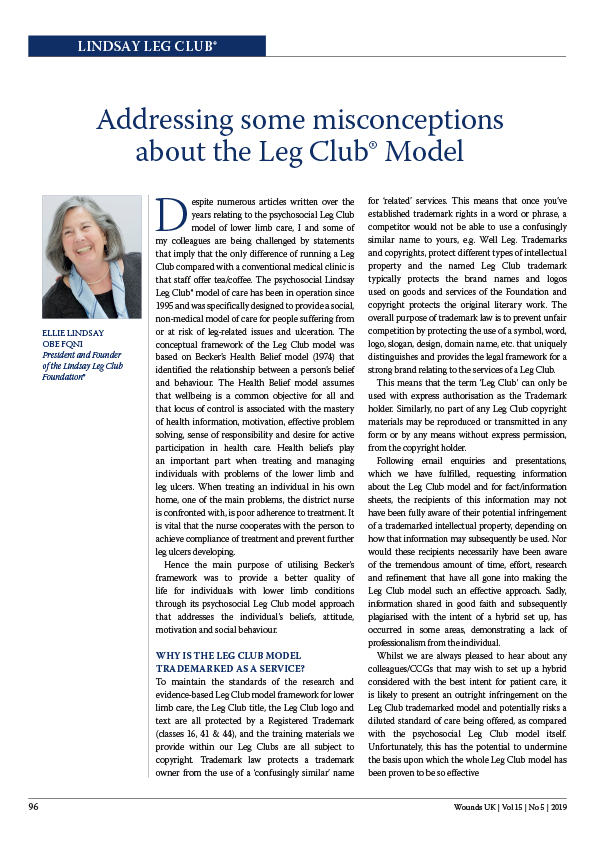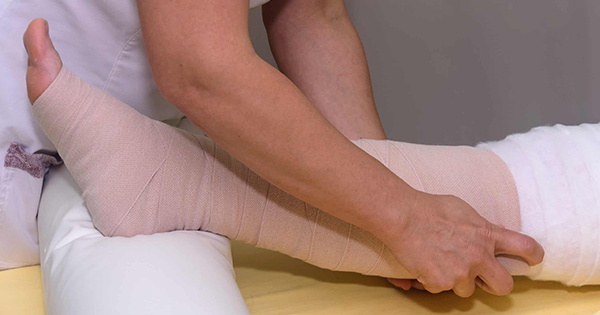Despite numerous articles written over the years relating to the psychosocial Leg Club model of lower limb care, I and some of my colleagues are being challenged by statements that imply that the only difference of running a Leg Club compared with a conventional medical clinic is that staff offer tea/coffee. The psychosocial Lindsay Leg Club® model of care has been in operation since 1995 and was specifically designed to provide a social, non-medical model of care for people suffering from or at risk of leg-related issues and ulceration. The conceptual framework of the Leg Club model was based on Becker’s Health Belief model (1974) that identified the relationship between a person’s belief and behaviour. The Health Belief model assumes that wellbeing is a common objective for all and that locus of control is associated with the mastery of health information, motivation, effective problem solving, sense of responsibility and desire for active participation in health care. Health beliefs play an important part when treating and managing individuals with problems of the lower limb and leg ulcers. When treating an individual in his own home, one of the main problems, the district nurse is confronted with, is poor adherence to treatment. It is vital that the nurse cooperates with the person to achieve compliance of treatment and prevent further leg ulcers developing.







